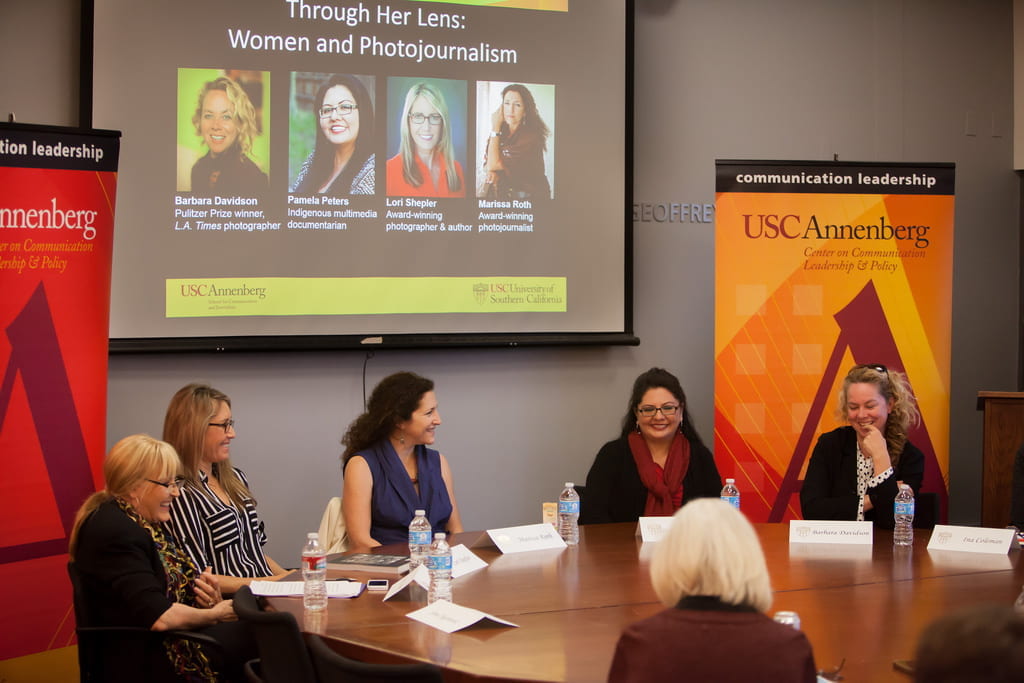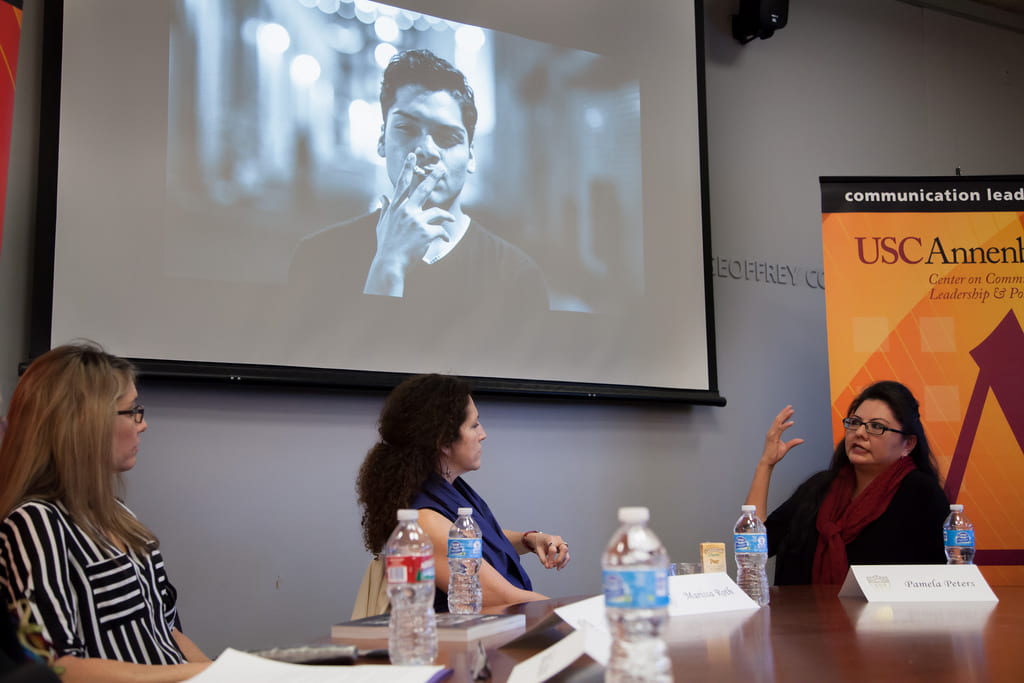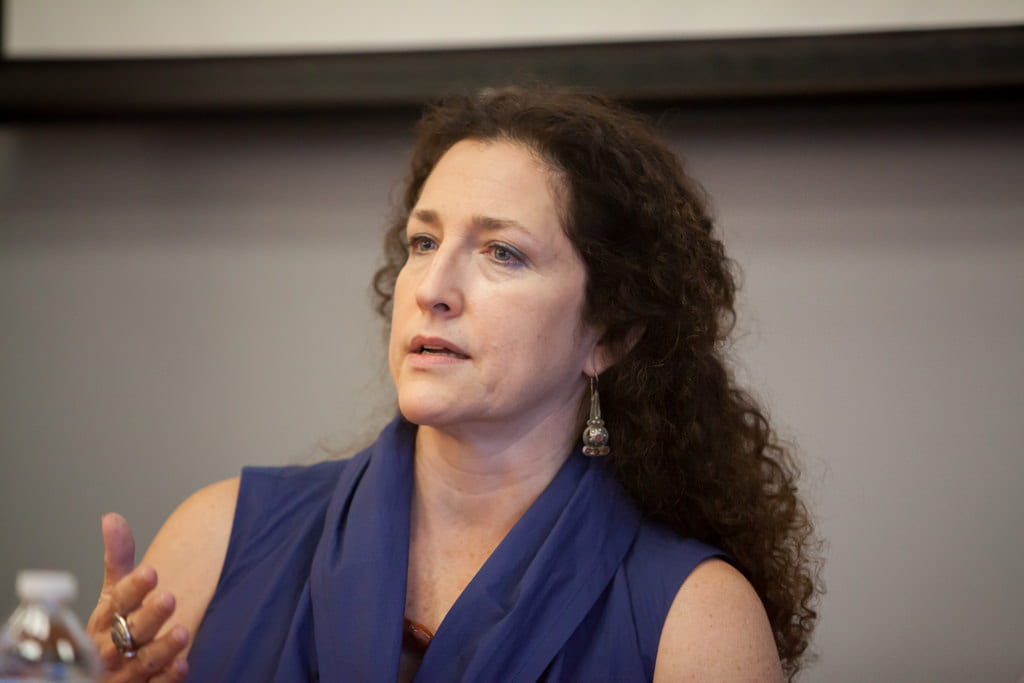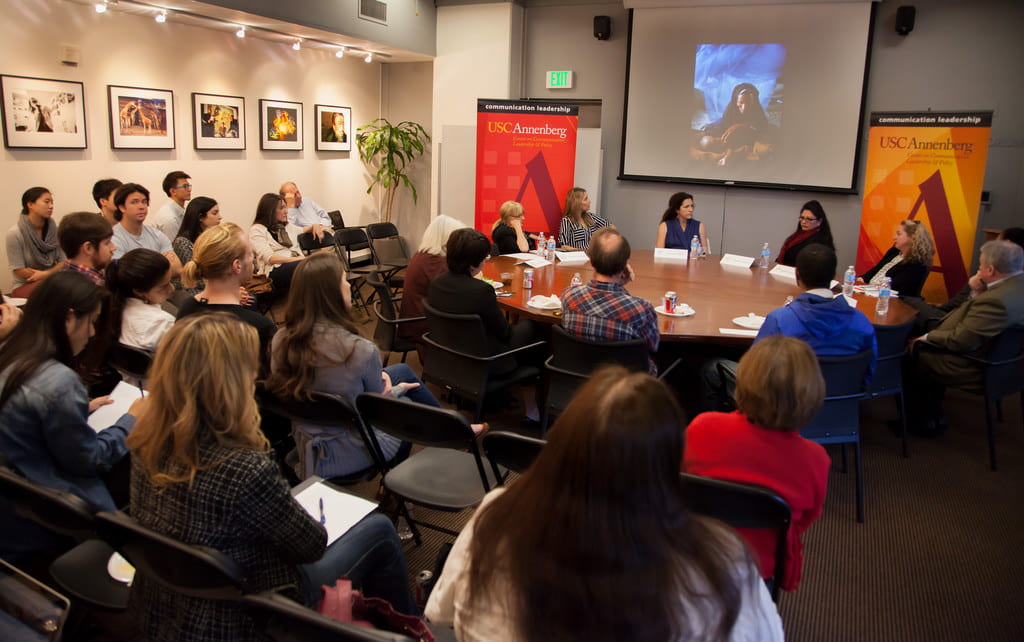Photojournalists are leaders in today’s newsrooms, according to Pulitzer Prize-winning Los Angeles Times staff photographer Barbara Davidson, a featured guest at the USC Annenberg School of Journalism/Center on Communication Leadership & Policy forum “Through Her Lens: Women & Photojournalism.” The January 28 program featured Davidson, along with award-winning photojournalist and documentary photographer Marissa Roth, indigenous multimedia documentarian Pamela Peters, and award-winning photographer and author Lori Shepler.
“Back in the day, photographers were really service people in newsrooms. We were seen as the dumb ones who just head for the buffet right away, we dressed sloppily, we weren’t very smart. But that’s all changed,” Davidson told an audience of more than 50 students and faculty. “We’re actually becoming leaders in the newsroom now. The business has changed dramatically. It’s much more visual-friendly now so our services are much more needed.”

CCLP senior fellow, author and journalist Narda Zacchino (pictured left) moderated the conversation, with introductions from Annenberg Journalism School Director Michael Parks and CCLP advisory board member Ina Coleman.
Each panelist shared a few of their best photos, discussing their inspiration and the challenges they’ve faced as photojournalists. Barbara Davidson (pictured above, right) shared photos from her work documenting war around the world and discussed her series “Victims of Gang Violence”, for which she won the 2011 Pulitzer Prize for feature photography.

Pamela Peters (pictured above, right) said that her work was inspired by “The Exiles”, a 1961 film that chronicles a day in the life of several young Native Americans who moved to Bunker Hill, Los Angeles after leaving their reservation in the 1950s. “I just fell in love,” said Peters, “because it showed a realistic image and story about American Indians’ journey to metropolitan cities at a time when Hollywood was creating these stereotypical, savage Indians. I fell in love with it because my whole mission is wanting to showcase a contemporary, realistic, humanistic image of who we are as American Indians.” Narda Zacchino agreed, “I think one of the least covered cultures in Los Angeles is that of Native Americans.”

Marissa Roth (pictured above) shared photos from “One Person Crying”, her photo essay documenting the effects of war on women around the war over the span of 29 years.
“It was one of the journeys that I didn’t know I was on for the first ten years,” Roth explained. “At the heart of all of this, which I didn’t realize until recently, was that this was my own search for trying to conquer that war. My parents were Holocaust refugees. […] We lost a lot of family. My parents never talked about the war, never talked about the family who was gone. Once they got to America and got to LA, there was no past; it was just present and future. On a deeper level, I wanted to understand war from a woman’s perspective.”

Lori Shepler (pictured above, right) spoke about how she self-published her photography book, Pau Gasol Life Vida. “When the LA Times thankfully laid me off and I could start another chapter of my professional life, I thought, well, why don’t I do a book on Pau?” Shepler then shared some anecdotes about documenting Pau Gasol’s personal life (“What happens in Pau’s shower stays in Pau’s shower”), and the whole room burst into laughter.

After the panelists shared their work, audience members had a chance to ask questions. USC professor and science writer K. C. Cole asked, “Do you still encounter sexism, obvious or not so obvious?”
“Early on, the competition was really challenging. I felt like, as a woman photographer, I proved myself maybe three times as good as the guys,” answered Marissa Roth. “And in terms of seeing the world differently, I mean, the camera is just a tool. So everything that comes out in the image has to go through us, so regardless, we’re filtering that through our head, our soul. I think a guy would have maybe done a far different project on women and war.”
“Or not at all,” added Narda Zacchino, prompting nods of agreement from Roth and the audience.
Zacchino then asked the panelists one final question: “What advice do you have for young photojournalists?”
Shepler emphasized the importance of adapting: “Getting laid off from the LA Times, a lot of people might fall apart, but I just looked at it like, well, it’s time to be somebody new!”
Roth said tenacity was the key: “Be tenacious… Lick your wounds and keep going.”
Peters reminded aspiring photojournalists to “think outside the box” and embrace their creativity.
Davidson stressed the importance of skills outside of photography, saying that employers are looking for students with multimedia skills. She said that in today’s job market, journalists and photographers need to be multifaceted. “Expand yourself. You have to be a one man band.”